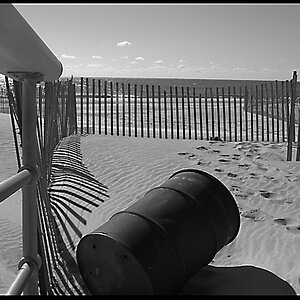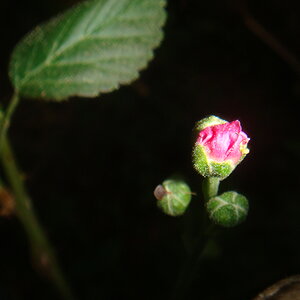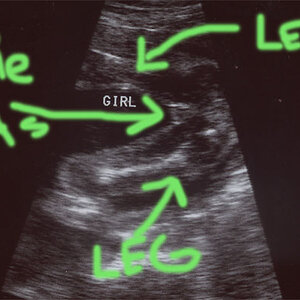fadingaway1986
I Burn Easily :(
- Joined
- Feb 4, 2004
- Messages
- 1,449
- Reaction score
- 9
- Location
- Queensland, Australia
- Website
- www.06photography.com
- Can others edit my Photos
- Photos OK to edit
Please?
Also, let me know if I completely missed the concept of anything. We basically had to write technical information relating to our assignment (which was panning, depth of field, perspective and dodging and burning) I still have to write dodging and burning.
Here it is
Panning
The technique of panning is used to obtain a photograph where a subject moving parallel to the camera is sharp. This generally results in a moving background, which in turn invites the viewer to believe the subject was moving. In order to use this technique, the photographers camera needs to be able to create exposures using long shutter speeds (such as 1/15th of a second.) The shutter speed is the determining factor in how much blur the background will show and therefore if a large amount of blur is required, a slower shutter speed is necessary.
Panning is accomplished by moving the camera at the same speed as the subject and keeping the subject in the same position in the viewfinder at all times. Mastering the ability to move with the subject whilst trying not to move the camera up or down is particularly hard and therefore requires a reasonable amount of time, film, patience and luck.
Perspective
There are two main factors when dealing with perspective. One is focal length and the other is distance of viewpoint. A combination of both of these will give you either Steepened Perspective or Flattened Perspective.
In order to obtain a good picture demonstrating steepened perspective, the camera requires a wide angle lens (such as 28mm). By getting very close to the subject, it will appear very large, and objects in the distance will appear substantially smaller than they truly are. This effectively exaggerates the subjects size.
On the other hand, flattened perspective is used to reduce the effects of depth. In order to obtain a good photograph demonstrating the use of flattened perspective, a telephoto lens will need to be attached to the camera. The telephoto lens reduces the distance between the subject and the background. The background will look as though it is right behind the subject, when it could in fact be a hundred or so metres behind the actual subject.
Depth-of-Field
Depth of field is the amount of distance between nearest and farthest objects that appear in acceptably sharp focus in a photograph.
Depth of field has three controlling factors:
1. Focal Length
2. Subject Distance
3. F-Number
Using a combination of the three, you can achieve either maximum depth of field or minimum depth of field.
In order to gain maximum depth of field, it is necessary to have a small aperture (large f-number for example f/22), a short focal length, and the subject is in the distance. Maximum depth of field is often used for the likes of landscapes, because it allows for everything in the scene to be sharp and in focus.
On the other hand, a minimum depth of field (also known as selective focus) can be used for the likes of portraiture, where only the object is needed to be in focus. Using a minimum depth of field, only a select amount of the photograph will appear in focus, and the rest blurry. This method can emphasise the importance of particular subjects or parts of a subject whilst eliminating irrelevant details. In order to obtain a the best possible minimum depth of field, the camera needs to have a large aperture (small f-number for example f/2.8), a long focal length, with the subject in the foreground and the background in the distance.
Also, let me know if I completely missed the concept of anything. We basically had to write technical information relating to our assignment (which was panning, depth of field, perspective and dodging and burning) I still have to write dodging and burning.
Here it is
Panning
The technique of panning is used to obtain a photograph where a subject moving parallel to the camera is sharp. This generally results in a moving background, which in turn invites the viewer to believe the subject was moving. In order to use this technique, the photographers camera needs to be able to create exposures using long shutter speeds (such as 1/15th of a second.) The shutter speed is the determining factor in how much blur the background will show and therefore if a large amount of blur is required, a slower shutter speed is necessary.
Panning is accomplished by moving the camera at the same speed as the subject and keeping the subject in the same position in the viewfinder at all times. Mastering the ability to move with the subject whilst trying not to move the camera up or down is particularly hard and therefore requires a reasonable amount of time, film, patience and luck.
Perspective
There are two main factors when dealing with perspective. One is focal length and the other is distance of viewpoint. A combination of both of these will give you either Steepened Perspective or Flattened Perspective.
In order to obtain a good picture demonstrating steepened perspective, the camera requires a wide angle lens (such as 28mm). By getting very close to the subject, it will appear very large, and objects in the distance will appear substantially smaller than they truly are. This effectively exaggerates the subjects size.
On the other hand, flattened perspective is used to reduce the effects of depth. In order to obtain a good photograph demonstrating the use of flattened perspective, a telephoto lens will need to be attached to the camera. The telephoto lens reduces the distance between the subject and the background. The background will look as though it is right behind the subject, when it could in fact be a hundred or so metres behind the actual subject.
Depth-of-Field
Depth of field is the amount of distance between nearest and farthest objects that appear in acceptably sharp focus in a photograph.
Depth of field has three controlling factors:
1. Focal Length
2. Subject Distance
3. F-Number
Using a combination of the three, you can achieve either maximum depth of field or minimum depth of field.
In order to gain maximum depth of field, it is necessary to have a small aperture (large f-number for example f/22), a short focal length, and the subject is in the distance. Maximum depth of field is often used for the likes of landscapes, because it allows for everything in the scene to be sharp and in focus.
On the other hand, a minimum depth of field (also known as selective focus) can be used for the likes of portraiture, where only the object is needed to be in focus. Using a minimum depth of field, only a select amount of the photograph will appear in focus, and the rest blurry. This method can emphasise the importance of particular subjects or parts of a subject whilst eliminating irrelevant details. In order to obtain a the best possible minimum depth of field, the camera needs to have a large aperture (small f-number for example f/2.8), a long focal length, with the subject in the foreground and the background in the distance.


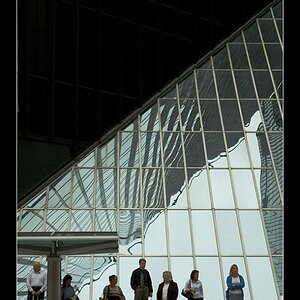
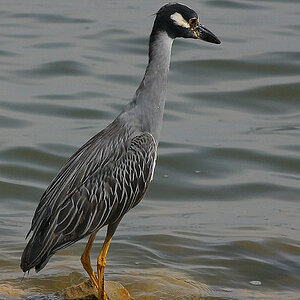
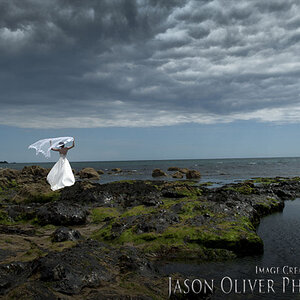
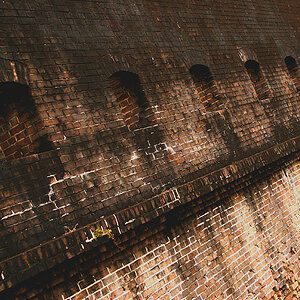
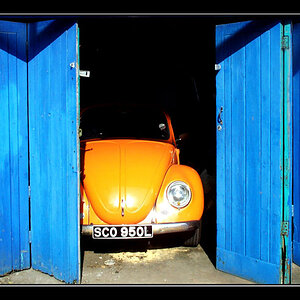
![[No title]](/data/xfmg/thumbnail/39/39224-aa3271aa220fe57f37caf898b6984846.jpg?1619738926)
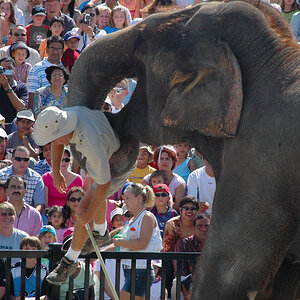
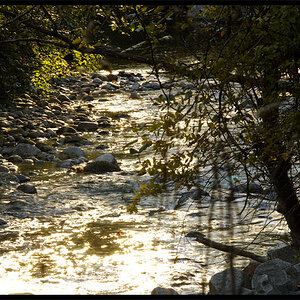
![[No title]](/data/xfmg/thumbnail/33/33359-a5cf76b8e843e82b3831650af6dfa6b3.jpg?1619735923)
